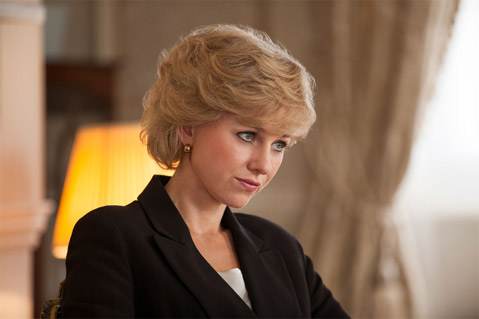Diana Tells a Fallen Fairy Tale
Naomi Watts Shines in New Historical Drama

It could seem that director Oliver Hirschbiegel’s often moving but sometimes middling film about the lovely and ill-fated Princess Diana is deceptively named. This is no sprawling biopic (thanks be to God); it’s a tale based on Kate Snell’s book Diana: Her Last Love, which tells the story of her last two years and focuses on the secret love affair with a Pakistani heart surgeon (played here by Naveen Andrews). Then again, the goal seems to be to get at the heart of Diana in a wisely self-limited time frame and narrative chapter, to telegraph a larger dramatic whole through the selective but loaded parts of her story in its final phase.
Hirschbiegel’s film looks at the intimate life of a highly public person, whose very public profile — and the rabid, buzzard-like attentions of the tabloids and their paparazzi henchmen, which ultimately killed her in August 1997 — was at odds with a personality that drew her to the level of the street or to humanitarian issues such as land mines. The film tries, and sometimes succeeds, in transcending the pitfalls of the biopic trade, in which we are front-loaded with the plot and can’t help comparing the real personage and the reel thespian faker.
But what makes Diana tick, as in beating-heart believable and narratively propulsive, is the remarkable performance of Naomi Watts. Aside from the more-than-reasonable likeness to her subject, Watts gives the larger-than-life Diana the necessary empathetic — and humanely sympathetic — sense of character and real-worldly compassion the real princess so emanated. At times, the film slips into melodramatic blah zones, but Watts rises far above the mediocrity, channeling her post-lovers’ quarrel rage into playing Bach’s Goldberg Variations in the Palace, for instance. In general, she makes us believe, or makes us desperately want to believe she is the People’s Princess reanimated and incarnate, at least for a couple of hours.



